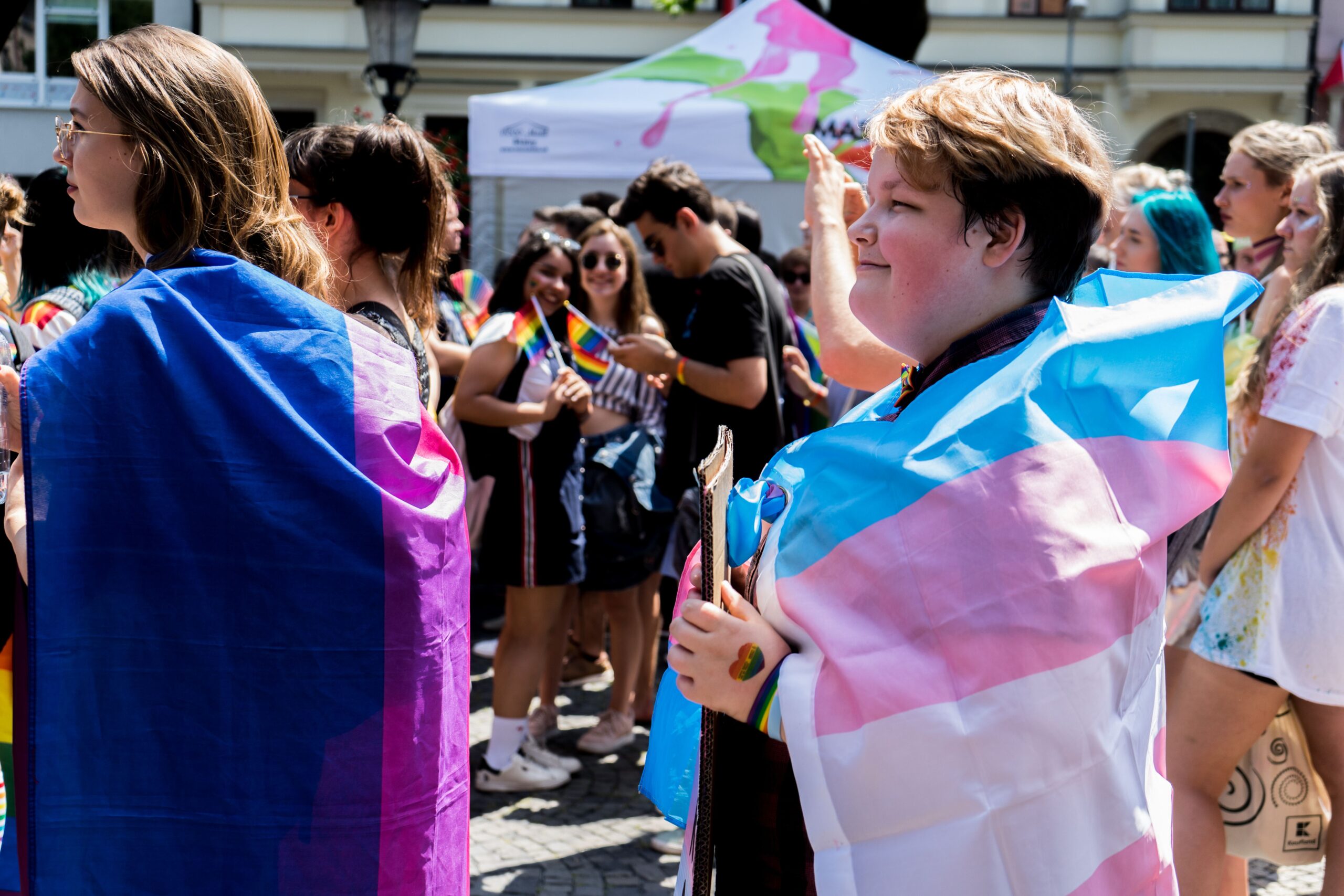Editor’s note: This article is part of our ongoing coverage of the Vatican declaration “Dignitas Infinita.” In a spirit of synodality, we have invited authors with a range of views on gender identity and its relation to Catholic teaching to present analysis and opinion. We invite you to read more of our coverage, including:
- “Dignitas Infinita” falters when it doesn’t practice what it preaches
- Papal biographer: Vatican is right on gender theory, but the church must walk with transgender people
- Vatican condemnation of “gender theory” a moment of whiplash for LGBTQ Catholics
- As a transgender Catholic, I don’t see gender diversity as a threat to our faith
- Transgender Catholics call the church to listen, says this Franciscan sister
- In “Dignitas Infinita,” the Vatican quarrels with a theory of its own making
I read “Dignitas Infinita” at an auto repair shop immediately after it was released. My first reactions were almost as scattered as the document itself. Even at first glance, I knew that the headlines would focus on the paragraphs about gender ideology and transgender surgical interventions, though they are short compared to the larger size and intent of the document. I sighed that this might draw attention from what could be a larger opportunity, one that a certain Chicago prelate saw decades ago.
A consistent ethic of dignity
Cardinal Joseph Bernardin, the archbishop of Chicago from 1982 until his death in 1996, understood the breadth of moral issues facing modern society as well as the political divisions of his time. Still, he wondered if there was an opportunity to form a coalition around at least a subset of them. He characterized his well-known insight first as a “seamless garment” and then a “consistent ethic of life.
“Dignitas Infinita” follows in this tradition of stitching together a long list of moral concerns with a unifying thread. Here we are encouraged to see the affront to human dignity that is in each and find it in our hearts to choose actions that honor and protect that dignity.
“Dignitas Infinita” follows in this tradition of stitching together a long list of moral concerns with a unifying thread.
In truth, Cardinal Bernardin’s ethic has not united the U.S. Catholic community politically. Perhaps this new document will provide an additional way in which people who are politically divided can find their way to mutual areas of agreement. Partly, that will depend on the quality of the church’s rationale on some of those issues.
Questions of theological method
Variants
Theologically, the new document’s argument on gender theory rests on a prior question: at what point does variance in creation qualify as part of creation? The Catholic Church has long taught that one way to know the “mind of God” is to look long and hard at the created world. St. Augustine perhaps said it strongest:
Some people, in order to discover God, read books. But there is a great book: the very appearance of created things. Look above you! Look below you! Note it. Read it. God, whom you want to discover never wrote that book with ink. Instead, He set before your eyes the things that He had made. Can you ask for a louder voice than that? Why, heaven and earth shout to you: ‘God made me!’
The Dicastery for the Doctrine of the Faith, which published “Dignitas Infinita,” argues that the bifurcation of humanity into male or female is normative and therefore the “mind of God.” The statistics are certainly overwhelming. When it comes to gender, 99.4 percent of the U.S. population describes themselves as female or male, while 0.6 percent explain an experience of gender that is inconsistent with their physical genitalia, or which is somewhere on a spectrum between male and female.
The question now is whether gender variance is of God or not. Is it a sin, or is it a variant?
And yet, statistical minorities also have their day. Homosexuality is no longer considered a choice by society, but a variant within the human community. The church has accordingly edged its way into accepting the notion that homosexuals are “God’s children” and moderated its past teachings that it was a sinful condition. The question now is whether gender variance is of God or not. Is it a sin, or is it a variant? If it is a variant, then the present teaching represented within this document must also adjust accordingly.
The use of scholarship
There is also a question of when church teaching must engage the insights of secular disciplines. No one blames the Early Church Fathers or Scholastics for their teachings that God placed the earth in the center of the universe. The rest of the world also believed that the celestial bodies all rotated around the earth. At some point, however, the scientific observations of Copernicus and others had to be taken into account.
Discussions of gender variance are almost certainly at that same point. So much new information on many LGTBQ matters has come to light in recent decades in the disciplines of history, sociology, biology, anthropology, psychology and medicine. The document fails to draw on any of it, and, even worse, the last time a Vatican dicastery spoke on this subject, it acknowledged the existence of this body of knowledge. In the 2019 document “Male and Female He Created Them,” we read:
If we wish to take an approach to the question of gender theory that is based on the path of dialogue, it is vital to bear in mind the distinction between the ideology of gender on the one hand, and the whole field of research on gender that the human sciences have undertaken, on the other.
Why, then, does this subsequent document choose not to incorporate it into its thought? The entire first chapter of Laudato Si’ has “the aim of drawing on the results of the best scientific research available today, letting them touch us deeply and provide a concrete foundation for the ethical and spiritual itinerary that follows.”
The Vatican houses a Pontifical Academy for the Social Sciences, an in-house resource that other departments regularly use to bring the best of current research to bear on questions they are considering. It would appear this structure was not employed either. Nor do they even provide footnotes referencing the “gender ideology” that they are condemning. Instead, the document simply quotes as many authoritative church voices as it can muster, none of whom take current research into account.
The document simply quotes as many authoritative church voices as it can muster, none of whom take current research into account.
Crediting firsthand experience
The Holy Father has repeatedly raised concerns that what he calls gender ideologies “erase the difference between the genders.” The Vatican declaration repeats this concern and asserts further that ideas which believe gender can be changed “at will” have effectively denied that one or the other gender has been placed within us at our creation, and that they have adopted a belief that such genders can be substituted at will, thereby giving way to the temptation of “making oneself God.” The authors insist that “only by acknowledging and accepting this difference in reciprocity can each person fully discover themselves, their dignity, and their identity.”
Few transgender individuals, however, deny the differences between male and female experiences of gender. Some feel interiorly more one gender than the other. Others feel aspects of both. No one is erasing the differences; rather, they are simply claiming an inner experience along a continuum of difference. This is a mismatch between what is being taught and what is being said by those with firsthand experience. As church teaching on gender continues to emerge, it would be strengthened if the firsthand experience of these individuals were explored, understood and believed.
Needs more
When teachers receive single-sentence answers to essay tests, they sometimes write in the margins “Needs more.” Such is the section on “sex change.” Simply put, it is so short as to be unhelpful. Francis is briefly quoted that “creation is prior to us and must be received as it was created,” but no explanation is then offered as to why it is acceptable to insert hair plugs for the bald, transplant new kidneys for the diabetic or separate conjoined twins. Catholic medical ethics has come far in the past several decades, and any discussion of medical matters deserves the sophisticated consideration we are now able to provide.
Dignity as a meeting place
It’s not always helpful when the church sets the terms of the debate before having the debate, but in this case, it may be a blessing. In this document, the church has now encapsulated its consideration of questions of gender within the category of human dignity. That’s a rich area within which to have a productive conversation. It offers a potential meeting place to consider what genuinely advances and protects the dignity of these individuals.
Dismissals of people’s experience do not advance their dignity.
Dismissals of people’s experience do not advance their dignity. Forcing individuals to hide their experience or to be shamed for their experience works against that dignity. Messages—subtle or not—that such individuals are not welcome in our parishes or schools also do not advance their dignity.
This document deserves thoughtful, informed response from the theological community, the scholarly community and those with firsthand experience of these matters. Those who know these experiences as a parent, sibling or friend, also have stories, discoveries, realizations and intellectual journeys that are valuable if shared. Some have already bravely stepped forward to share their experience. The publication of this document offers a fresh opportunity to offer and solicit those stories.
In all our conversation going forward, we should heed the document’s call to place the concept of human dignity at the center of our conversation and moral decision making. If there is any genuine contribution of “Dignitatis Infinita,” it is that.



